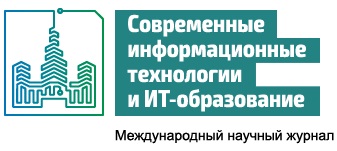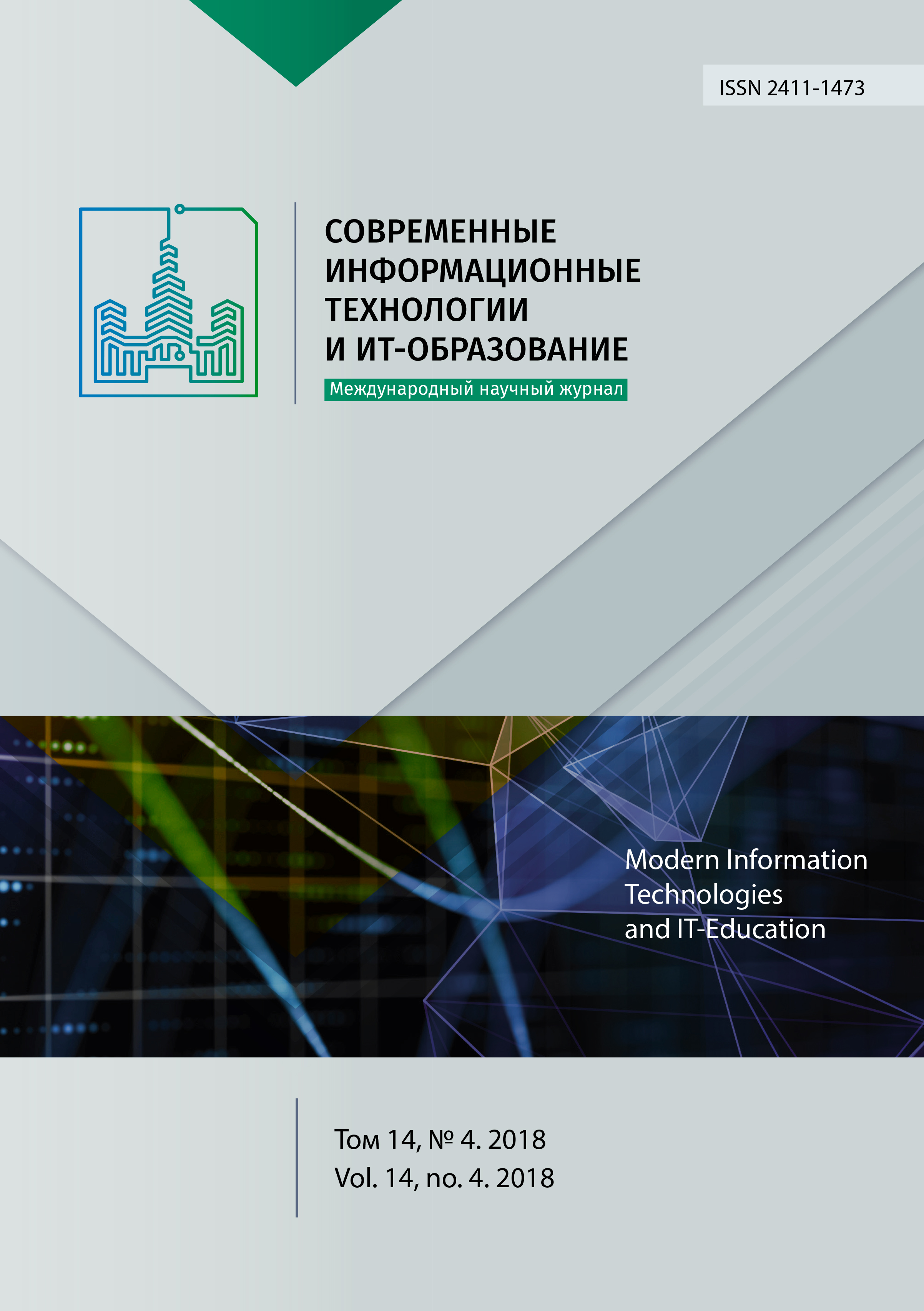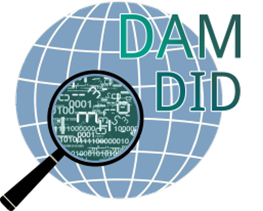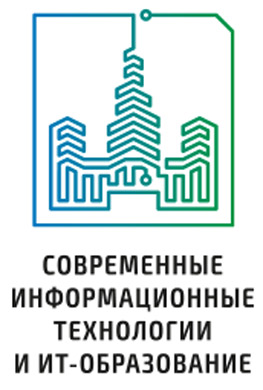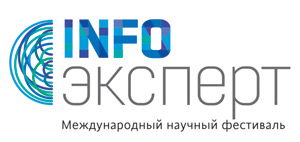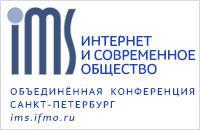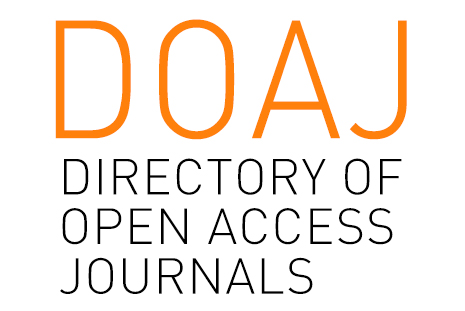THE STUDY OF THE PURCHASE PROPENSITY OF THE USER OF THE ONLINE STORE ON THE BASIS OF TECHNICAL DATA ON VISITS OF VISITORS TO THE ONLINE STORE
Abstract
The paper describes the development of an automatisation service for marketing campaigns on the basis of web usage data mining. The source web usage data were obtained from Yandex.Metrika service. On the basis of exploratory data analysis it was decided to divide the work into the following stages: analysis, building an assembly of models, assesing the efficiency of the models and selecting the best one, and publishing the web service with the purpose of its further usage in the Internet shop CMS within marketing campaigns.
The data mining was conducted on the basis of Loginom Analytics Platform which allows to create analytic models as well as to present them out as web services. For the data mining 3 approaches - association rules, time series and scoring - were used. The scoring model demonstrated the best results, it showed excellent results on test data, with that the coefficient expert analysis confirms its correctness and applicability. In case of necessity the developed analytic model can be learned on web usage data of any Internet shop provided by Yandex.Metrica service.
References
[2] Shafranovich Y. Common Format and MIME Type for Comma-Separated Values (CSV) Files. RFC, 4180. IETF, (October 2005). 8 р. Available at: https://www.ietf.org/rfc/rfc4180.txt (accessed 03.11.2018).
[3] Deductor. BaseGroup Labs. Available at: https://basegroup.ru/deductor/description (accessed 03.11.2018). (In Russian)
[4] Time series data. Loginom. Available at: https://wiki.loginom.ru/articles/time-series.html (accessed 03.11.2018). (In Russian)
[5] Loginom. Available at: https://loginom.ru (accessed 03.11.2018). (In Russian)
[6] Paklin N.B., Oreshkov V.I. Business intelligence: from data to knowledge. St. Petersburg: Peter, 2013. 704 p. (In Russian)
[7] Shahidi A. Introduction to the analysis of associative rules. BaseGroup Labs. Available at: https://basegroup.ru/community/articles/intro (accessed 03.11.2018). (In Russian)
[8] Eliseeva I.I. Econometrics. 2nd ed. M.: Finance and Statistics, 2005. 576 p. (In Russian)
[9] Date and time. BaseGroup Labs. Available at: https://basegroup.ru/deductor/function/algorithm/date (accessed 03.11.2018). (In Russian)
[10] Quantization. BaseGroup Labs. Available at: https://basegroup.ru/deductor/function/algorithm/quantification (accessed 03.11.2018). (In Russian)
[11] Sampling. BaseGroup Labs. Available at: https://basegroup.ru/deductor/function/algorithm/sample (accessed 03.11.2018). (In Russian)
[12] Paklin N. Logistic regression and ROC analysis - mathematical apparatus. BaseGroup Labs. Available at: https://basegroup.ru/community/articles/logistic (accessed 03.11.2018). (In Russian)
[13] Telikani A., Shahbahrami A. Data sanitization in association rule mining: An analytical review. Expert Systems with Applications. 2018; 96:406-426. DOI: 10.1016/j.eswa.2017.10.048
[14] Cook J.A. ROC curves and nonrandom data. Pattern Recognition Letters. 2017; 85:35-41. DOI: 10.1016/j.patrec.2016.11.015
[15] Fatta Di G. Association Rules and Frequent Patterns. Encyclopedia of Bioinformatics and Computational Biology. Reference Module in Life Sciences. 2019; 1:367-373. DOI: 10.1016/B978-0-12-809633-8.20333-6
[16] Salles R., Belloze K., Porto F., Gonzalez P.H., Ogasawara E. Nonstationary time series transformation methods: An experimental review. Knowledge-Based Systems. 2019; 164:274-291. DOI: 10.1016/j.knosys.2018.10.041
[17] de Vasconcelos J.B., Rocha A. Business analytics and big data. International Journal of Information Management. 2018. DOI: 10.1016/j.ijinfomgt.2018.10.019
[18] Faraway J.J., Augustin N.H. When small data beats big data. Statistics & Probability Letters. 2018; 136:142-145. DOI: 10.1016/j.spl.2018.02.031
[19] Butler A.E., Copnell B., Hall H. The development of theoretical sampling in practice. Collegian. 2018; 25(5):561-566. DOI: 10.1016/j.colegn.2018.01.002
[20] Hyndman R.J., Athanasopoulos G. Forecasting: Principles & Practice. University of Western Australia, 2014. 138 p.
[21] Billig V.A., Korneeva E.I., Syabro N.A. Association Rules. Compared Analysis of the Tools. Programmnye produkty, sistemy i algoritmy. 2016; 2.:1-41. (In Russian) DOI: 10.15827/2311-6749.16.2.2
[22] Grokhovsky L.O., Sevostyanov I.O., Ivanov D.V., Fironov F.A. Promotion of portals and online stores. SPb.: Peter, 2015. 224 p. (In Russian)
[23] Romanenkova O.N. SEO-promotion as an effective tool for Internet Marketing. Business strategies. 2014; 1(3):120-124. Available at: https://elibrary.ru/item.asp?id=21618536 (accessed 03.11.2018). (In Russian)
[24] Lyubitsyn V.N. Improvement in Data Quality in the Context of Modern Analytical Technologies. SUSU Bulletin. Series “Computer technologies, management, electronic engineering”. 2012; 23(282):83-86. Available at: https://elibrary.ru/item.asp?id=17869672 (accessed 03.11.2018). (In Russian)
[25] Gubanov V.A. Comparison of Time Series Seasonal Adjustment Methods. Scientific Articles – Institute of Economic Forecasting Russian Academy of Sciences. 2010; 8:149-169. Available at: https://elibrary.ru/item.asp?id=15193311 (accessed 03.11.2018). (In Russian)
[26] Popkova A.A. Assessment of efficiency and comparison of models of business analytical projects with application of the datamining technologies. Economics, Statistics and Informatics. Vestnik UMO. 2013; 4:184-190. Available at: https://elibrary.ru/item.asp?id=20211211 (accessed 03.11.2018). (In Russian)
[27] Popov A.A., Holdonov A.A. Structural optimization of fuzzy regressional models with minimizing the error on the test sample. Herald NGIEI. 2018; 2(81):7-19. Available at: https://elibrary.ru/item.asp?id=32509226 (accessed 03.11.2018). (In Russian)
[28] Skiba S.A., Loiko V.I. Social Scoring. Scientific Journal of KubSAU. 2013; 91:1508-1517. Available at: https://elibrary.ru/item.asp?id=20678980 (accessed 03.11.2018). (In Russian)
[29] Bannykh A.A. The method of quality estimate of the scoring model with consideration of the credit profitability. Bulletin of Udmurt University. Series Economics and Law. 2014; 3:21-24. Available at: https://elibrary.ru/item.asp?id=22933317 (accessed 03.11.2018). (In Russian)

This work is licensed under a Creative Commons Attribution 4.0 International License.
Publication policy of the journal is based on traditional ethical principles of the Russian scientific periodicals and is built in terms of ethical norms of editors and publishers work stated in Code of Conduct and Best Practice Guidelines for Journal Editors and Code of Conduct for Journal Publishers, developed by the Committee on Publication Ethics (COPE). In the course of publishing editorial board of the journal is led by international rules for copyright protection, statutory regulations of the Russian Federation as well as international standards of publishing.
Authors publishing articles in this journal agree to the following: They retain copyright and grant the journal right of first publication of the work, which is automatically licensed under the Creative Commons Attribution License (CC BY license). Users can use, reuse and build upon the material published in this journal provided that such uses are fully attributed.
